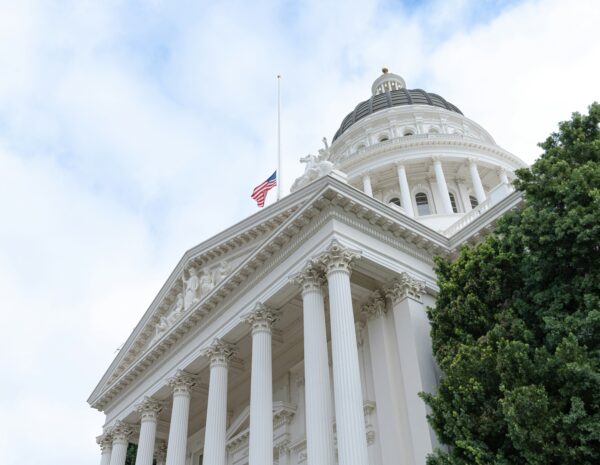California AB 1955, also known as the SAFETY Act, became law on July 15th. What does it mean for parents, students, and teachers? Learn more today.
California’s legislature often receives outsized national attention. The state’s deep-blue partisan nature, its size, and the political ambitions of its leaders often make it a trailblazer in public policy. While some on the left see progressive accomplishments like requiring corporations to disclose their climate impact as an example to replicate, critics on the right highlight these actions in their criticisms of government overreach.
When you combine California’s spotlight with hot-button topics like LGBTQ+ rights and education, you’re bound to have a highly followed, emotional debate. This is exactly what happened with CA AB 1955, the “Support Academic Futures and Educators for Today’s Youth (SAFETY) Act.” Governor Gavin Newsom signed the SAFETY Act into law on July 15th. Reactions have come in from both sides. Perhaps most notably, Elon Musk shared that he intends to move X and SpaceX headquarters from California to Texas in response.
What does the SAFETY Act Do?
The SAFETY Act is a response to a growing state and local trend. State and local policies increasingly require school staff to inform students’ families regarding any change in their pronouns or gender identity, regardless of the student’s consent. Eight states and a number of individual school districts have passed such policies. Referred to by opponents as “forced outing policies,” similar policies adopted by California school districts have been challenged by Governor Newsom’s administration in court.
The SAFETY Act prevents educators from being required to disclose information related to students’ sexual orientation, gender identity, or gender expression without the a student’s consent, unless otherwise required by law. It also prohibits school districts from enacting or enforcing policies requiring such disclosures. In short, with the passage of the SAFETY Act, California becomes the first state to prohibit “forced outing policies.”
However, the bill does not prohibit educators from communicating with families regarding students’ gender identity or sexual orientation when deemed appropriate or necessary. It only ensures that educators are not required to disclose this information to parents. Most California school districts don’t currently require educators to disclose this information. For these districts, the new law does not change any current procedure.
Finally, the bill also directs the state Department of Education to develop resources to support LGBTQ students and their families. This includes support groups, counseling services, and specially trained school staff.
Reactions and Next Steps
Even before making it to Governor Newsom’s desk, the SAFETY Act was the subject of fervent debate. In late July, a floor debate turned chaotic as lawmakers shouted at each other out of turn. At one point, some lawmakers were restrained from physical confrontation.
National reaction has been swift following the bill’s signing. This is to be expected, given the polarizing nature of California politics. Supporters and advocates praise it as protecting LGBTQ youth. Opponents, however, claim it restricts parental rights. Musk’s announcement of his move, as mentioned, has also attracted significant attention. Interestingly, several news outlets have shared misleading headlines:
- LA Times: Newsom signs bill banning schools from notifying parents about student gender identity
- KCRA: Gov. Newsom signs transgender parental notification ban in schools
- Fox News: California Gov. Gavin Newsom signs bill banning schools from notifying parents of child’s gender identity
As mentioned, the SAFETY Act does not ban educators from sharing information with parents. It only prohibits policies that require educators to share that information with parents.
The SAFETY Act will go into effect in January of 2025. In the meantime, it has become the subject of multiple lawsuits within just 72 hours of becoming law. California courts will have the next say in what happens to this policy.
Using Plural to Monitor California AB 1955
Top public policy teams in California trust Plural to monitor key legislation like California AB 1955. With Plural, you’ll:
- Access superior public policy data
- Be the first to know about new bills and changes in bill status
- Streamline your day with seamless organization features
- Harness the power of time-saving AI tools to gain insights into individual bills and the entire legislative landscape
- Keep everyone on the same page with internal collaboration and external reporting all in one place




